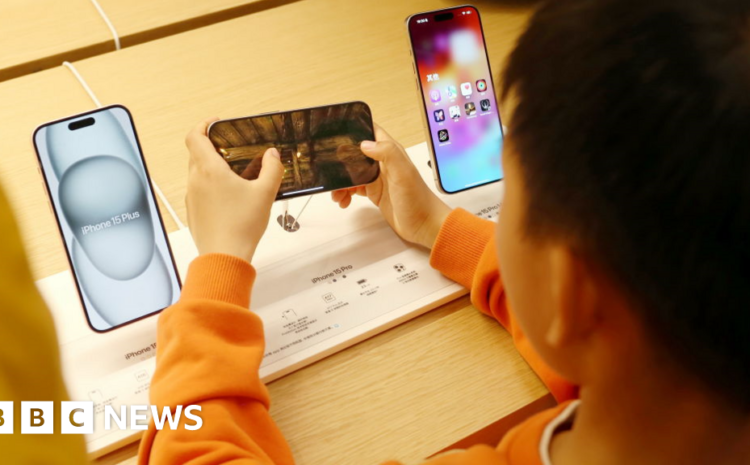How to Check Whether a Power Bank Is Allowed on a Plane
[ad_1]

Having extra juice for your phone is always handy, especially when you land in a new city or country. However, if you plan on bringing extra batteries or a power bank on the plane, you should ask, “Are power banks allowed on planes?” The answer, as you will soon learn, is not as straightforward as most would think.
Are Portable Chargers Allowed on Planes?
Power banks are hands-down one of the most necessary tech items to carry when traveling. However, just as with everything else, portable chargers are a regulated item for flights.
When it comes to determining whether airlines allow power banks on planes, you must consult two governing agencies: the Transportation Security Administration (TSA) and the Federal Aviation Administration (FAA). Both organizations have strict rules regarding what they consider “external lithium-ion batteries,” and this includes power banks and other portable rechargers.
In general, power banks can go on planes, as long as they meet the following criteria:
- All lithium-ion rechargeable batteries must be rated 100-watt hours (Wh) or less per battery.
- The power bank or rechargeable battery must not be damaged or recalled.
- The portable charger must be able to come out of your bag when you go through security.
- The power bank(s) you bring on board must be for your own personal use, not for sale or distribution.
If you have a portable battery rated between 101 and 160 watt hours, you can obtain airline approval to carry this power bank on the plane. However, you can only carry up to two battery packs of this size onto the airplane.
Where Should I Pack a Power Bank?
The rule here is simple: anything with a rechargeable lithium-ion battery must be in your carry-on luggage. This rule applies not only to laptops and smartphones but also to power banks and other portable batteries.
It may seem strange, but keeping these potentially explosive devices where they can be monitored is safer. Having a phone catch fire in the cabin is frightening, but it would be far worse in a cargo hold, no one can readily notice and stop the fire before it spreads.
If you accidentally took an oversized battery on a flight or left one in your checked luggage, it isn’t likely to cause a catastrophe, but there is a non-zero chance of disaster. A quick search for “exploding battery on a plane” will bring up plenty of cases, though generally, these fires have been quickly extinguished.
The only confirmed battery-related disaster was a UPS plane in 2010 that crashed at Dubai International Airport after a fire caused by a cargo of lithium batteries. This crash is a significant reason that restrictions on passengers carrying lithium batteries exist, and UPS now carries this kind of cargo in special fiberglass containers. There is also an (unsubstantiated) hypothesis that a cargo of lithium-ion batteries was responsible for the disappearance of MH370 in 2014.
Can You Take a 20,000 mAh Power Bank on a Plane?
Putting your batteries in your carry-on is easy enough, but that may not be enough to get you past security if you’re packing an energy source that could power a small village. However, it’s hard to know which power banks are allowed on planes, as they often use milliamp hours as their power measurement, not watt hours.
Here’s the formula to convert between units:
- Find your battery’s mAh number.
- Find the voltage (usually 3.6V/3.7V).
- Divide the mAh number by 1,000, converting it to Amp hours (Ah).
- Multiply the Ah number by the voltage to get the Watt-hours.
If you’re still in doubt, this table based on common power banks may help:
| Milliamp Hours | Approximate Watt Hours | Permitted on Plane? |
|---|---|---|
| 5,000mAh | 18.5Wh | Yes |
| 10,000mAh | 50Wh | Yes |
| 20,000mAh | 100Wh | Yes |
| 30,000mAh | 150Wh | If airline grants permission |
| 50,000mAh | 250Wh | No |
Bringing Multiple Power Banks on Flights
While you can’t bring a single power bank over 100Wh on a plane without getting permission, you can bring more than one power bank that adds up to or exceeds that number. Typically, you can travel with two power banks on a flight if each one meets the requirements established by TSA and FAA. However, each airline has unique rules. If you are traveling with someone who doesn’t have a power bank, you could also ask them to hold your additional bank for the flight.
Safety Checklist for Carrying a Power Bank on a Plane
Make sure you check this table before you fly to eliminate the possibility of any inconveniences at the airport and beyond. To avoid any power mishaps while flying, we suggest you:
- Keep your batteries in the cabin.
- Don’t take power banks over 100Wh without consulting the airline.
- Ensure your portable charger is properly working before taking it on the flight.
Armed with that information, you should be able to have a relaxing flight in your high-speed metal tube, flying several kilometers above the ground.
If you need recommendations for power banks allowed on planes, check out our guide on power banks made for laptops and our list of impressive small power banks.
Image credit: Pexels
Subscribe to our newsletter!
Our latest tutorials delivered straight to your inbox
[ad_2]
Source link



